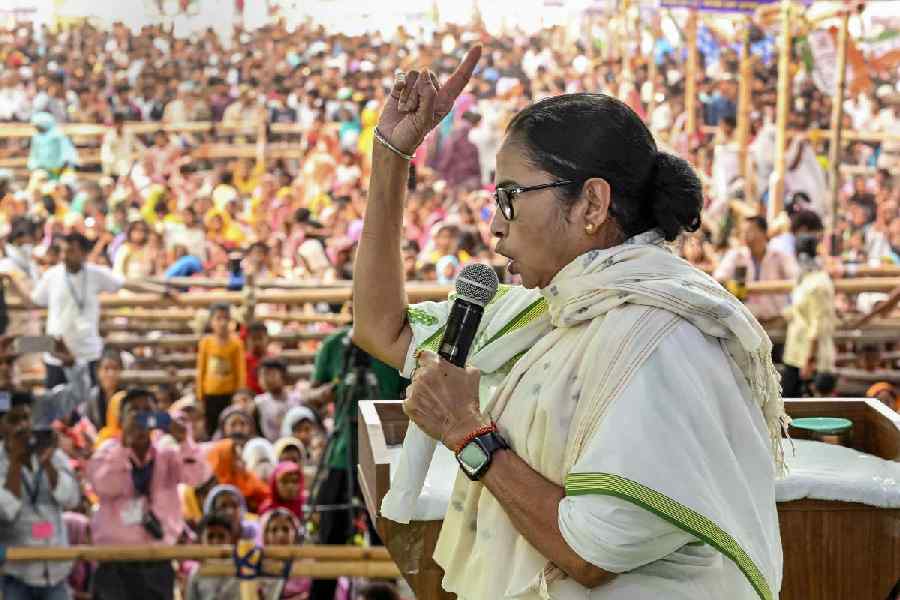Every visitor to the city of Calcutta is aware of certain must-visit spots, as is every resident. Victoria Memorial, Howrah Bridge, Indian Museum and so on. But this list is not rigid, it varies according to the interests of the person out to discover this old-new city. Jorasanko, home of Rabindranath Tagore, might be the Mecca for some, while a foodie will head first to Dacres Lane or Zakaria Street for a taste of Diamond Fish Fry or sutli kebab. Here is a list of my own. It is neither all-inclusive nor indisputable. Since walking is the best way to experience a city intimately, and the season
of walks is upon us, the list begins with a favourite.
Grey Town walk
Infant Calcutta had two distinct parts — British White Town with its tree-lined roads and wide boulevards, and native Black Town with its twisting narrow lanes. In bet-ween grew Grey Town. Here settled all the people attracted from far-off lands by business opportunities. There were Jews and Armenians, Portugese and Chinese, Muslims and Parsis, and their houses of worship.

Nakhoda Masjid. Paromita Sen
Nakhoda Masjid. The two-kilometre walk through the heart of what was Grey Town could start from this mosque, which took its present shape in the early days of the 20th century — till 1854 two mosques stood on the present site. Nakhoda means mariner (specifically, master of the ship) in Persian and it was built by the Cutchi Momins, a trading community from Kutch who were in the shipping business. Zakaria Street, on which the masjid stands and which is famous for its Mughlai street food, is named after Haji Zakaria, who united the two masjids by buying the land in between.
Next stop, the Cathedral of the Most Holy Rosary on Portuguese Church Street, founded by the Portuguese in 1799 and rebuilt in 1940. A major attraction at the cathedral, also known as the Murgihata Church, is a series of 14 woodcuts depicting the crucifixion. Then, Beth El Synagogue with its blue, starry ceiling near Ezra Street, set up in 1856. Walk through the heart of Tiretti Bazaar to take a look at the elegant Toong On Church at 22 Blackburne Lane. The ground floor of the church used to house the Nanking restaurant, which many claim was the first Chinese restaurant in India and hosted film stars like Dilip Kumar and Raj Kapoor.
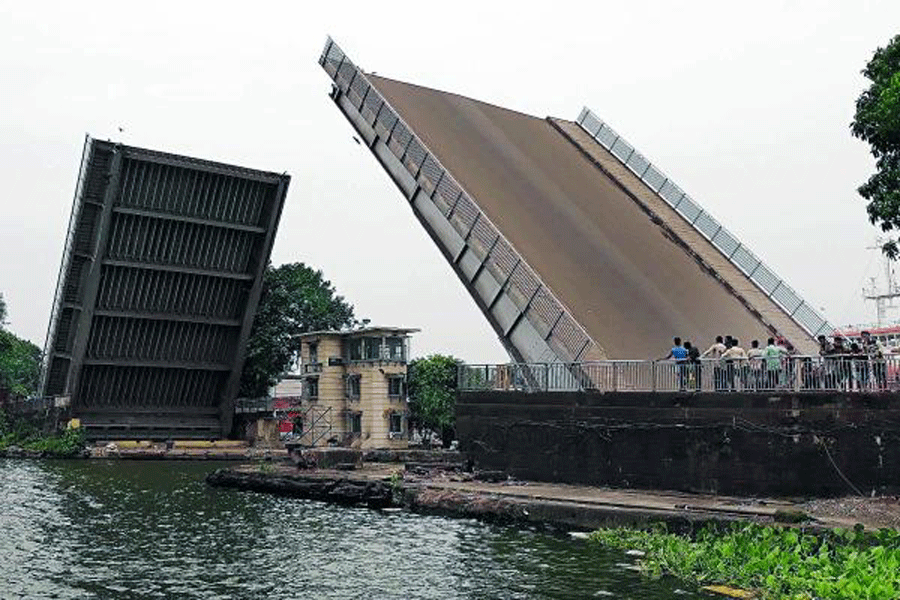
Bascule Bridge in Kidderpore. The Telegraph
Bascule bridge in Kidderpore
Now known as the Nazrul Setu, this bridge connects Garden Reach with Kidderpore. It sits atop the creek that links the Kidderpore dock to the Hooghly and comes apart in the middle and lifts up to allow big ships to pass. It takes 25 minutes to fold up and is an awe-inspiring sight. The only other such bridge in India is the Pamban Railway Bridge in Rameshwaram, Tamil Nadu, but it is now closed to traffic.
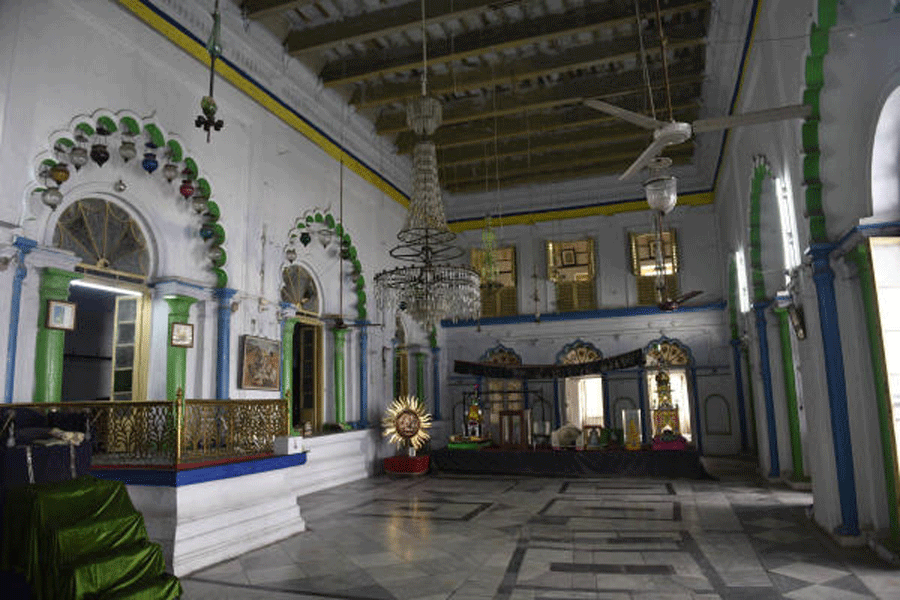
Sibtainabad Imambara. The Telegraph
Wajid Ali Shah’s tomb
The Sibtainabad Imambara is an elegant structure housing the tomb of the last and banished ruler of Oudh, Wajid Ali, and his heir apparent. It also houses the silver tazia that is taken out on Muharram. Just like the popular Calcutta biryani, kites too were introduced to Calcutta by Wajid Ali and accepted just as enthusiastically.
Metiabruz houses a thriving and colourful kite-making industry, most of it in a particular lane. Parikhana, the house in which Wajid Ali Shah lived, is in the neighbourhood. It is now the quarters of the general manager of South Eastern Railway. If you are visiting the area in the morning, don’t miss the halwa-puri breakfast available at pavement stalls.

Sabarna Roy Choudhury museum. The Telegraph
Sabarna Roy Choudhury museum
From 1608 to 1757, this family was the zamindar of the area on which Calcutta stands. They were the ones who in 1698 sold the villages of Sutanuti, Gobindapur and Kolikata to the British for Rs 1,300. A copy of the Urdu sale deed and its English translation — procured after much back and forth with the British Library — is on display in the museum and research centre run by the family out of Saptarshi Bhawan in Barisha in Behala. It also has a rich philately and coin collection, family heirlooms and old documents, among other things.
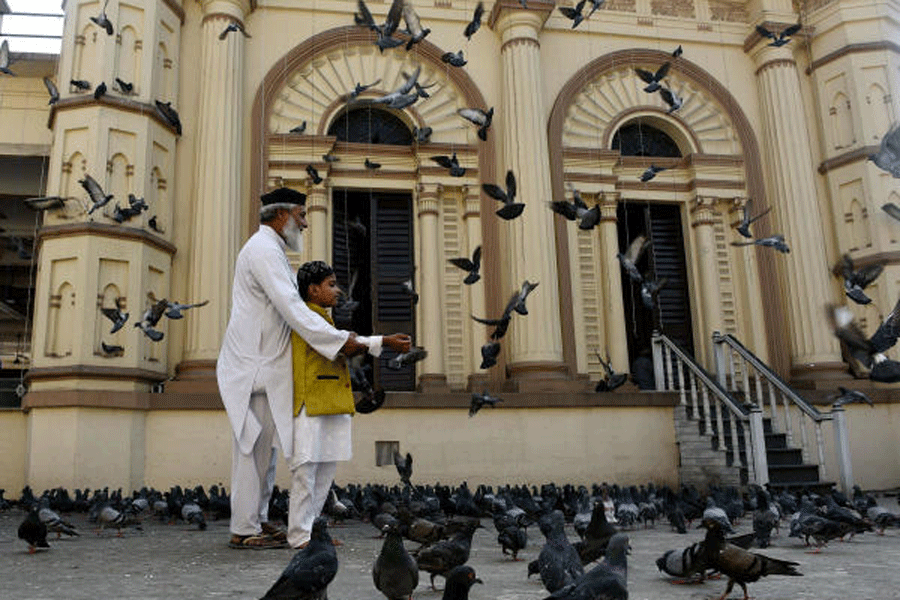
Pigeons being fed at Tipu Sultan Mosque. The Telegraph
Tipu Sultan Masjid on Prince Anwar Shah Road
Everyone knows of the Tipu Sultan mosque at the busy Lenin Sarani crossing in Central Calcutta, but do you know its twin sits on the crossing of Prince Anwar Shah Road and Deshpran Sasmal Road in south Calcutta, barely 20 minutes away from South City Mall?
Set amidst airy gardens and relative quiet, it too has a double row of domes, four minarets shaped like Gothic columns and a beautiful checkered courtyard. It has a pond, an imambara and the grave of Golam Mohamed Shah, eleventh son of the Tiger of Mysore, and the man who got the twin mosques built. Anwar Shah was a grandson of Tipu Sultan.

Pareshnath Jain Temple. Wikepedia
Parshwanath Jain Temple
This pocket of quiet situated in the crowd-ed Gouribari area near Manicktala has temples dedicated to three tirthankaras of which the one dedicated to Sitalnathji is the oldest. It was built by Roy Badridas Bahadur in 1867, after whom the street is now named. The Sitalnath Temple is lavishly decorated with glass and mosaic work. The beautiful floral work on the mosaic floors is exceptional. There is a formal garden with a multitude of marble figurines, ornamental fountains and paved pathways. It is the only Jain temple in the city open to people of all faiths.
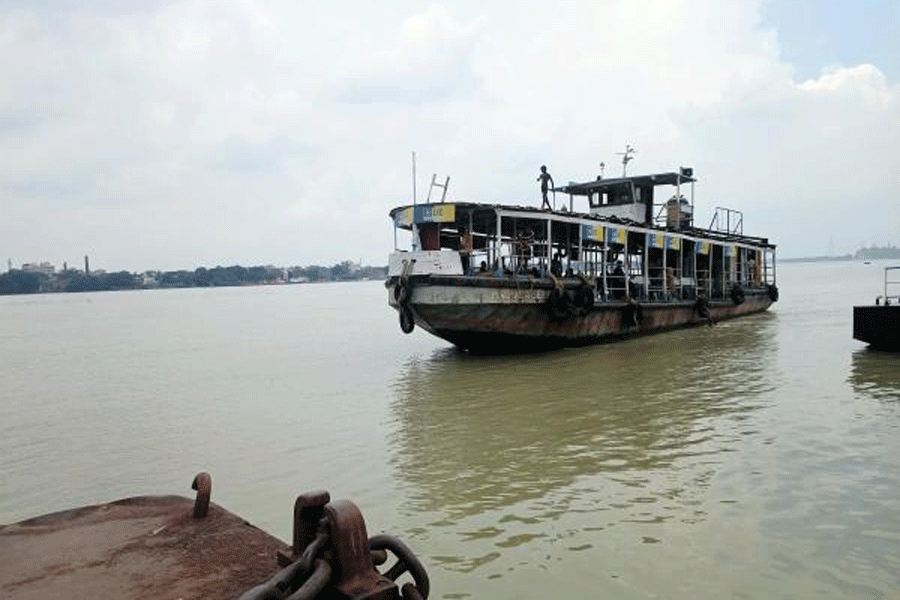
A ferry on the Hooghly river. Paromita Kar
Launch ride on the Hooghly
Hop onto a launch from Bagbazar Ghat and take a ride to Howrah or Babu Ghat downriver. Seeing the city from the Hooghly gives a different perspective and makes you realise just how much of the city’s importance is due to the flowing highway. The river is lined by numerous ghats on both sides. There are about 42 on the Calcutta side, including the still busy Chandpal Ghat, where most Englishmen landed in the early days of the city. Babu Ghat is one of the oldest and has a sloping ramp to make immersion of idols easy while the elegant cast-iron Armenian Ghat was built in 1734. Many ghats have recently been refurbished though historic accuracy hasn’t been maintained.

College Street book market. The Telegraph
College Street stroll
Home to prestigious academic institutions such as Calcutta Medical College, Presidency University, Hare School, University of Calcutta and Sanskrit College, the street came by its name because the Hindu College (now Hindu School), set up in 1817 by David Hare, stood on it. It was simply called the Great Arterial Road earlier. It lives up to its Bengali name, boipara or book neighbourhood, with shops, stalls and hawkers all selling books. These sell old books as well as new though these days it is textbooks that rule the roost. Second-hand fiction, both English and Bengali, can now be found in only one stretch off College Street. No visit to College Street is complete without a pilgrimage to Coffee House, where the walls themselves seem to be imbued with the essence of greats such as Netaji Subhas Chandra Bose, Satyajit Ray, Jagadish Chandra Bose, Amartya Sen, Aparna Sen, Ritwik Ghatak and Manna Dey, who are said to have frequented the place. The other place with connections to such legends — some of their pictures are even displayed at the entrance — is Paramount, an old high-ceilinged, dark-beamed shop with the most delicious rabri-topped sherbets (daab or green coconut being the most famous). Paramount deals only in cash.
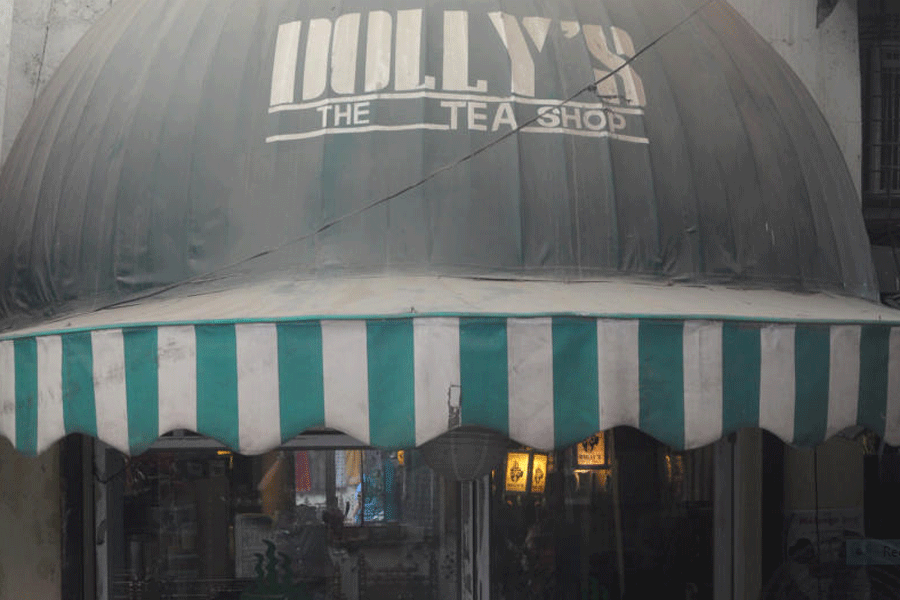
Dolly's tea shop at Dakshinapan. The Telegraph
Dakshinapan
One of the earliest shopping complexes of the city, it houses all state emporiums and was the trendy spot in the 1990s. It boasted of the first open-air cafe in Calcutta, Dolly’s Tea Shop. Its shops have plenty to offer across a range of prices. It is the place to shop for costume jewellery, fashionable blouses, cotton saris and is light on your purse too. Don’t miss the phuchka seller at the gate who also sells a spicy but delicious alu dum. And if you are interested in catching a play, Madhusudan Mancha is right next to it.
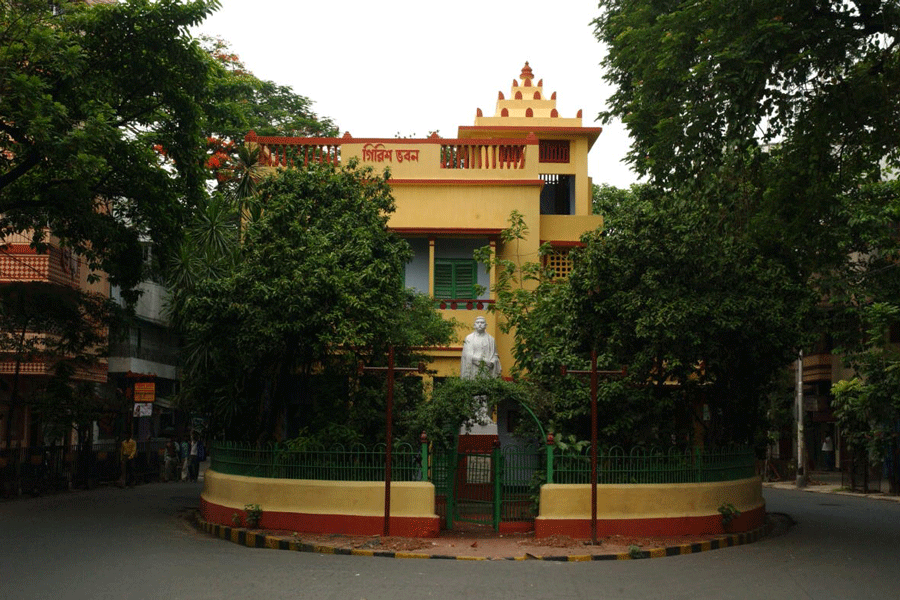
Girish Chandra Ghosh's house. The Telegraph
Girish Bhawan
Calcutta was the first city of theatre before Mumbai took over. And Girish Ghosh could be considered the father of Bengali theatre. The house in Bagbazar that he was born in now sits in the middle of Girish Avenue — like an island — and houses a museum that has his papers, objects he used as well as old printed pamphlets of his plays or handbills. The handbills carry the name of the play, a synopsis, the cast and a woodcut print illustrating the play and by themselves make the visit worth it.










